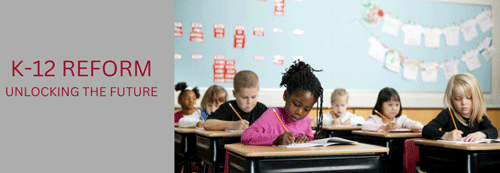Career Pathways and the Future of American Education

In the last couple weeks, Opportunity America, in concert with the Walton Family Foundation, released a compendium of essays entitled, “Unlocking America’s Future.” See here for the 12 essays and a video of the release. This is a provocative mix of perspectives from the right and the left. I wrote one of them, here, entitled, “Career Pathways: An American Moment.”
This is a strong collection of work, and many of these big ideas may just stick, but as I was reading these essays, I was reminded of what David Tyack and Larry Cuban shared with us in their 1995 book, Tinkering Toward Utopia: A Century of Public School Reform.
The message I took away from their work was not that change was impossible, but that in any complex, democratic system, large-scale transformation is often slower and more incremental than most of us want to see.
This is especially true in a time of divided, polarized government. As I write this, I’m taking the train from Washington, D.C. and was reminded of the battles that are brewing in our Supreme Court around college access and that the divide in the House and Senate doesn’t bode well for sweeping change.
However, there’s something to be said for steady, incremental change. While progress often feels glacial at the time, the system has moved. Standards, and disaggregation of data by race and gender are now accepted practice. We now have universal kindergarten and are expanding toward universal pre-K. Online courses for K-12, and college-level courses and industry-recognized credentials in high school are now common place. Access for all races, language speakers, and abilities, after hard-fought civil rights legislation, are now the norm. These are major shifts, but they didn’t happen overnight.
Career pathways is an idea that, in relative terms, is fairly rapidly changing what it means to become a young adult in this country.
We’re seeing our middle schools rethink their approach and the walls separating high school, college, and work melt away. Parents and educators are seeing this play out in real time. Students are engaging in meaningful work-based learning experiences, earning advanced college credits and industry-recognized credentials while still in high school.
So, even in divided government, when there is bipartisan support and the incentives for parents, students, policymakers, practitioners and employers make sense, things tend to move. As I wrote about in the American Moment, the recent growth of the career pathways effort nationally has been powerful, but there’s still a lot we don’t know.
For instance, since the ratios of students to guidance counselors are often 300:1, we don’t tend to do a very good job of helping young people make informed choices about their lives, what some call “career navigation.” And because the world of work is moving so fast, we often don’t do a great job of collaborating with employers to ensure that what we’re teaching is current and relevant.
To that end, this April, I’m going to be visiting some countries outside the U.S. to see what we can learn. More about that in the coming weeks.
Related Topics: career pathways, delaware pathways, opportunity america, walton family foundation